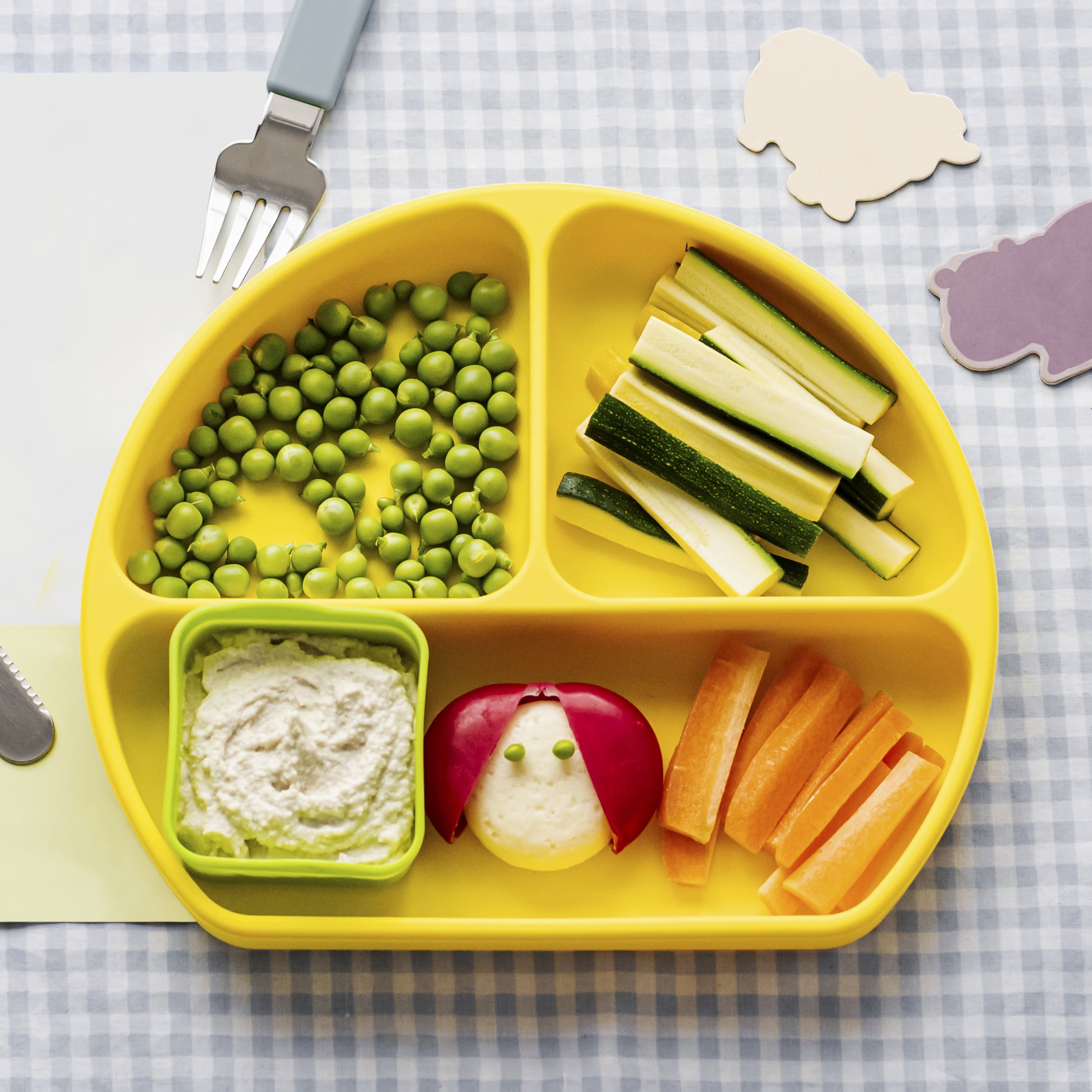The big transition to solids can be a challenge for moms. Some kids get fussy or end up making a mess with their food. And you can’t always play food-as-airplane every meal either. While some moms prefer the traditional route of spoon-feeding purees and mashed food, a growing number of parents are trying out this innovative way of eating: The Child-led Weaning.

Photo by Freepik from Freepik
Child-led weaning is an approach to introducing solid foods that allow kids to explore, play with and feed themselves. Instead of holding a spoon, you place finger foods in your kid's hand. It is recommended that the transition to solid meals be done around the age of six months 1, when your kid can hold their head up on their own and has developed enough skills to manipulate food. The sensory component of this method helps promote healthy eating habits as children learn to taste and recognize new foods.
Preparation for child-led weaning is easy as there isn’t much equipment needed to make and store food. Remember that before you start giving your child food chunks, ensure they are developmentally ready2. To check this, your kid should be able to:
- Steadily hold their head straight
- Sit up firmly with little to no support.
- Swallow food without the extrusion/tongue thrust reflex, which causes the tongue to push food out of the mouth
Can Child-Led Weaning Cause Choking?

Photo by Cookie Studio from Freepik
It’s normal to be concerned about choking concerns. Child-led weaning is safe and there’s no significant evidence that it increases the risk of choking. Everything will be fine as long as your kid is developmentally ready and prepared for this next step.
Take note that choking is different from gagging; hence, it is salient to know their differences. It is normal for kids to gag as they are still trying to maneuver food into their mouths. Gagging is a safety response as a child might cough and go red in the face, giving you vivid signs. On the other hand, choking is silent and can be deadly.
Transition to Solid Food Feeding Techniques
First things first, safety should be your non-negotiable. Although child-led weaning can be thrilling, here are feeding techniques to ensure success:
1. Use a Highchair
Set your child up with a highchair facing the table to prevent them from choking on their food. Make sure they’re comfortable and can freely use their arms and hands but keep them sitting upright so they don’t accidentally tip over!
2. Mess is Part of the Fun

Photo by rawpixel-com from Freepik
Having your child feed their own is tough. Your kid may inevitably create a mess by dropping food on the floor. You can use a floor cover so clean-ups can be easier. Moreover, you may use a tray instead of placing food on plates or bowls that are fragile.
3. Welcome Your Kid in Mealtimes
Kids love to mimic adults. Welcoming them in your mealtimes helps them learn how to eat and behave at the table.
4. Always Be with Your Kid
Never leave your kid unattended during meals. Always keep a close eye on them as they are still in the learning phase.
5. Watch Out for Choking Hazards
Start with soft-cooked food such as a stick of vegetables like carrots, celery, and sweet potato. The key here is to give food that your child can easily bite and chew. Never give grapes, nuts, fruits, and seeds as they are known choking hazards.
Benefits of Child-Led Weaning
Your kid can develop healthy eating habits which can impact long-term health outcomes. There are a lot of benefits that your child can gain from child-led weaning, these are the following
1. Fine Oral and Motor Skills
Child-led weaning allows your kid to use all five senses, providing physical and sensory opportunities for your child 3. A clear example is gripping food of various sizes and textures, improving manual dexterity. Having them put food in their mouths is a good sign of hand-eye coordination. Also, letting them learn how to chew helps develop facial muscles which can aid digestion
2. Appetite Regulation
Child-led weaning lets your child become an active participant in the feeding process. Good eating habits established during childhood can last a lifetime.4 According to research, providing the chance to let kids be in control of what they eat helps them self-regulate hunger. Learning how to recognize fullness at an early age can help prevent obesity 5.7.
3. Unlock Food Familiarity
Transitioning to solid food unravels your child to a new world of textures and tastes. Child-led weaning helps your child distinguish different flavors and how they work together. One study found that child-led weaning may reduce picky eating habits 8.
4. Develop Self-Confidence
Giving your child the freedom to feed themselves helps them trust their judgment. As their exposure and experience with food widen, they will be able to easily develop their food preference. Their judgment of what’s delicious and what’s not good can create positive reinforcement 6; thereby, helping increase your child’s self-esteem.
Child-led weaning should be done with caution and care. Always consult with your doctor on the best feeding techniques and methods especially if you’re unsure. The first step is always a struggle. Once you get the hang of it, you will enjoy meaningful moments and bonding experiences between you and your kid.
References:
- Complementary Feeding, available at https://www.who.int/health-topics/complementary-feeding#tab=tab_1. Accessed on 25 October 2022.
- When, What, and How To Introduce Solid Foods, available at https://www.cdc.gov/nutrition/infantandtoddlernutrition/foods-and-drink…. Accessed on 25 October 2022
- Baby Led Weaning Provider Notes, available at http://ohioaap.org/wp-content/uploads/2016/09/5-ProviderNotes_BabyLedWe…. Accessed on 25 October 2022
- Children’s Eating Attitudes and Behaviour: A Study of The Modelling and Control Theories of Parental Influence (2004), available at https://academic.oup.com/her/article/19/3/261/642259. Accessed on 25 October 2022
- Measuring Behavioural Susceptibility to Obesity: Validation of the Child Eating Behaviour Questionnaire (2007), available at https://pubmed.ncbi.nlm.nih.gov/16962207/ Accessed on 25 October 2022
- The Benefits of Baby-led Weaning (2008), available at https://www.naturalchild.org/articles/guest/gill_rapley_and_tracey_murk…. Accessed on 25 October 2022
- Early influences on child satiety-responsiveness: the role of weaning style (2007), available at https://pubmed.ncbi.nlm.nih.gov/16962207/. Accessed on 25 October 2022
- How feasible is Baby-led Weaning as an approach to infant feeding? A review of the evidence (2012), available at https://pubmed.ncbi.nlm.nih.gov/23201835/. Accessed on 25 October 2022


